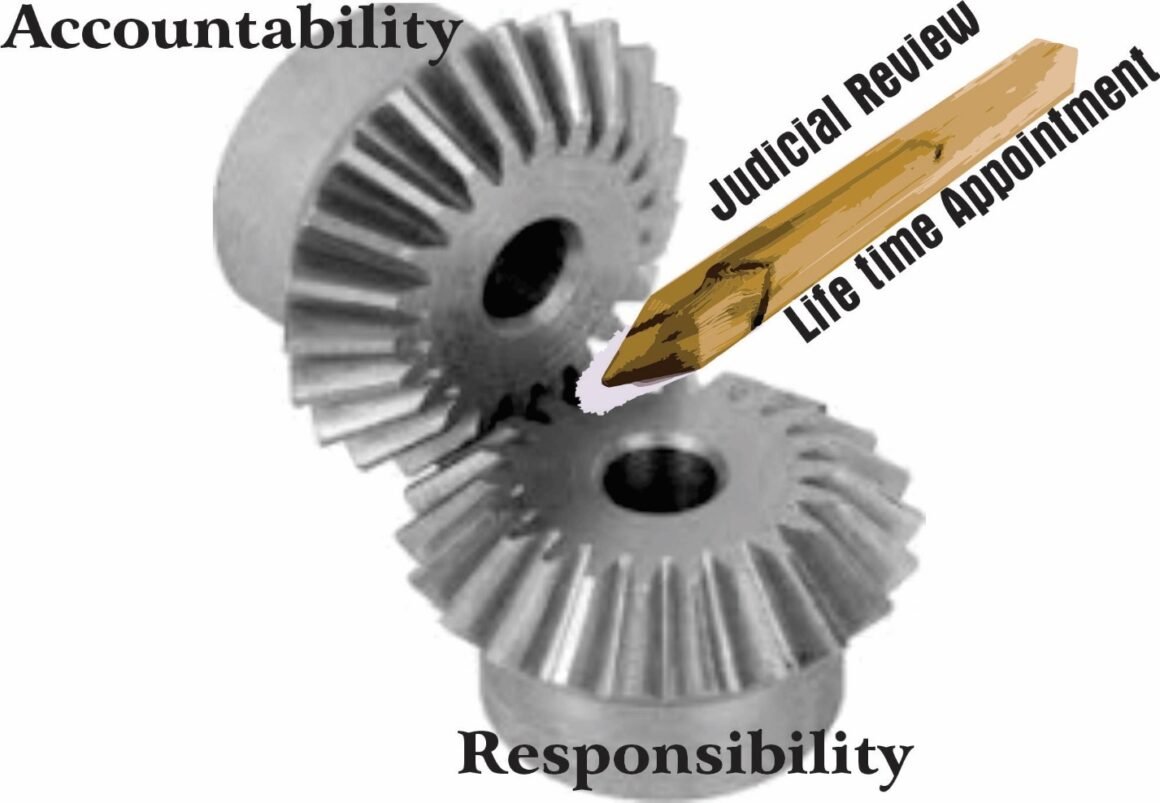
Responsibility and Accountability Part 4: The Judiciary and Accountability
This is Part 4 of a series on accountability and responsibility. As the graphic shows, the two should work together, but can but can get jammed. But often the two are divorced, or at least separated, in this case, by Judicial Review and life-time appointments.
Article III of the Constitution does not provide for judicial review. Chief Justice John Marshall implemented it in Marbury v. Madison and no one challenged it. Now it is tradition. Not law, just tradition. Section 1 of Article III states:
The Judges, both of the supreme and inferior Courts, shall hold their Offices during good Behaviour, and shall, at stated Times, receive for their Services, a Compensation, which shall not be diminished during their Continuance in Office.
The Constitution does not define “good Behaviour”. It comes from English Common, where even there, it is a bit of a vague concept. Yes, judges can be impeached under Article I, Section 2, but in practice, this is extremely rare. Only one Supreme Court Justice was impeached since 1790, the first year of the court. Practically speaking, the judiciary, at the federal level, is completely unaccountable. At other levels, judges may be subject to election. But as with politicians—and the judges are politicians—the electoral accountability may be small.
The Constitution also does not set the size of the Supreme Court. Franklin Roosevelt tried to use this vagueness to pack the court with more justices favorable to his ideas. Fortunately, he failed. Now President Biden’s administration seeks to pack the court again. The jury is still out on this effort. He also:
…signed an executive order establishing the ‘Presidential Commission on the Supreme Court of the United States,’ a commission of legal scholars formed to discuss potential reforms to the Supreme Court. In October of that same year, the Commission released discussion materials prepared in advance of its fourth meeting. These materials outline a variety of proposed reforms to modify “the Court’s role in the constitutional system.”1 One reform that the Commission considers is the establishment of “legislative overrides of Supreme Court decisions.”2
This is still a work in progress and will depend on what the next administration does.
Couple non-Constitutional judicial review with lack of accountability and you have a recipe for abuse of power. Many judges stray into the legislative arena and there is some concern they take legislative powers from the legislature. Some judges have even stated the Constitution is obsolete and longer valid.
To curb potential judicial abuse and abuse of the judiciary, we need to:
- Amend Article III of the Constitution to:
- Set the number of judges on the Supreme Court nine seems to work.
- Define “good Behaviour,”.
- Set an age limit on judges or some other way to prevent judges from serving when they are no longer cognitively competent.
- Either provide for judicial review and define or eliminate it.
- Provide or voter recall for elected judges and some form of oversight.
1 https://www.whitehouse.gov/wp-content/uploads/2021/10/COURTS-ROLE.pdf, pg. 1.
2 See footnote 1, pg. 25.





